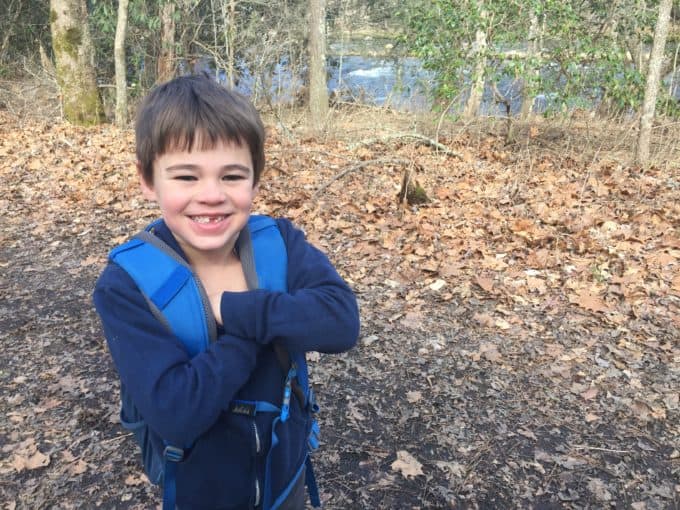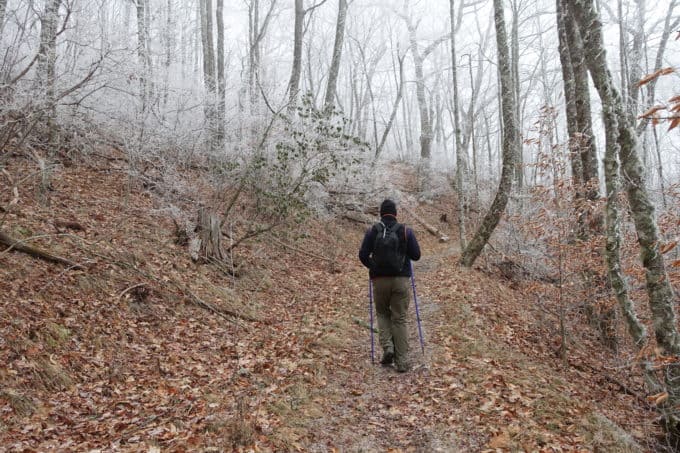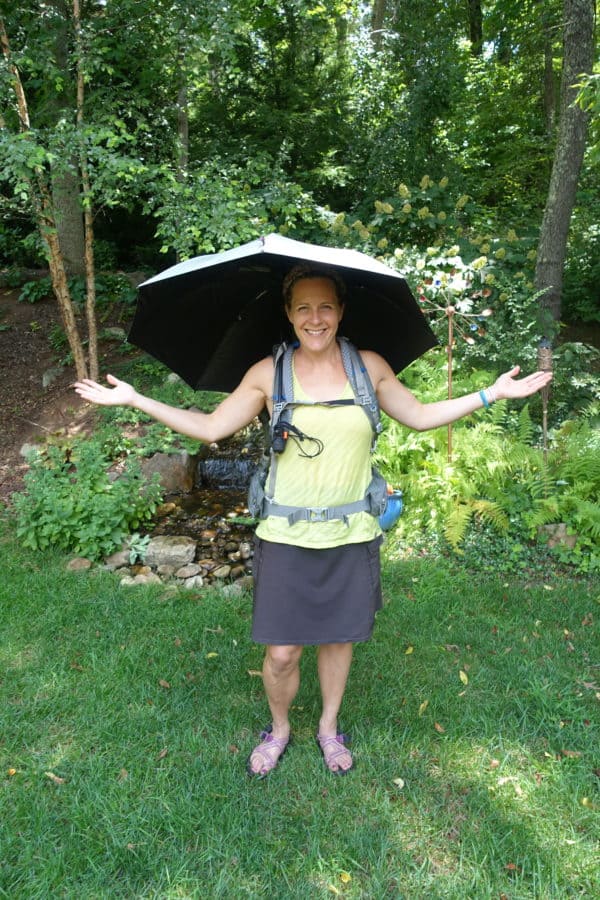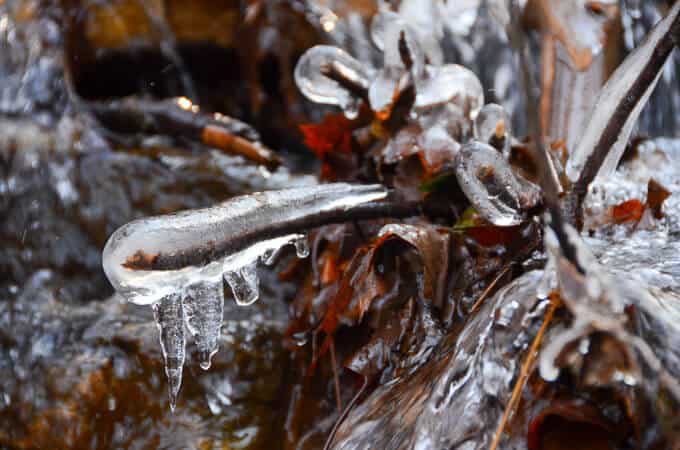In September 2018, my search and rescue team was involved in an extensive and tragic search in Great Smoky Mountains National Park for a 53-year-old woman, Susan Clements, who went missing on one of the most popular trails in the Park. She was less than a mile from Clingman’s Dome, an iconic landmark in the park, complete with droves of tourists angling to walk the short path to the highest peak in Tennessee.
Seven days later, Susan Clement’s body was found in a creek drainage, miles from the trail she had been hiking. The clues that led the searchers to her were articles of her clothing. She had died of exposure, or more specifically, hypothermia.
Ms. Clement’s death left the Smokies hiking community reeling. We’re a tight bunch in these mountains, and we look after our own in addition to the well being of visitors who come to our little slice of paradise. The Smokies claiming someone’s life in what was perceived to be a fairly benign environment and time of year was both tragic and confusing to many. I heard repeatedly, “It just wasn’t that cold.” or “She was close to the parking lot–how could she have missed that turnoff to it.” Many firmly believed that foul play had to be involved–they were simply incredulous that Susan died they way she did.
Interestingly, to those of us searching for Ms. Clements, her death did not come as a surprise. The day she went missing, temperatures dipped into the 40’s with rain that evening, with inevitable wind, given the location. Ms. Clements did not have anything her to protect her from the elements other than an inexpensive rain poncho purchased at a gift shop before the hike.
Her death was a textbook case of hypothermia, but it was also a tragic example of how quickly things can turn deadly on even the most popular of hiking trails, if you don’t have the knowledge or resources to keep you safe.
Hypothermia is a deadly beast. If you spend any time in the backcountry, it’s imperative to know its chain of events as well as how to treat it if you or a companion is suffering from its effects.
Disclaimer: Susan Clements was one of the worst tragedies I’ve ever experienced on SAR. Her case will be brought up as an example multiple times. My intent is not to berate her decisions or point out her mistakes. I simply want to use it as a teaching tool because it’s about as textbook of a fatal hypothermia case that you can find.
Our Internal Thermostat
Core body temperature for a human is roughly 98.6 degrees Fahrenheit, with slight variations in each person. For reasons that aren’t always entirely clear, individual tolerances to temperature extremes varies from one person to another. A good example of this is how different individuals will sleep in the same model and temperature rated sleeping bag in the same environment. Some will wake up complaining they were cold all night, while others will have been toasty warm.
Certain metabolic and environmental factors also play into these variances. Exceptionally lean athletes may have a harder time maintaining a core temperature, but a dehydrated overweight individual may have an equally difficult time. A bald headed person will probably become cold more quickly without the benefit of a hat. Dehydrated or malnourished individuals are are much more susceptible to hypothermia. You get the point. But at the end of the day, what matters is that we are all susceptible to hypothermia.
What we do to stave it off in the first place makes all the difference in surviving environmental conditions that promote a lowering of core body temperature. And speaking of those environmental conditions, hypothermia isn’t just a cold weather problem. It can strike at any time of year in most climates.
Differences in Types of Hypothermia
Looking at hypothermia broadly, it can be broken down into two rough categories: Mild and severe. Most folks have suffered from a case of mild hypothermia at some point in their life. Broadly speaking, mild hypothermia occurs when the core body temperature is in the range of 90-95 degrees Farenheit. The following sequence of events occurs during this stage:
95 degrees: Mild hypothermia becomes a bit more obvious. Most folks start to become afflicted from “the umbles” such as mumbling, fumbling, and/or stumbling. Shivering is also a hallmark sign of mild hypothermia. Shivering is your body’s involuntary response to generate heat by rapidly contracting your muscles.
From 90-94 degrees, a hypothermic individual will usually exhibit anything from mild amnesia to apathy for their situation and a disregard for how cold they are, to convulsive shivering.
With every drop in degree below 95, your cerebral metabolic rate decreases by 3 to 5 percent. This is the most critical stage to recognize you or someone you’re hiking with is hypothermia. A good guideline to discern mild from severe hypothermia is if someone is shivering and recognizes that they are cold.
Treatment for Mild to Moderate Hypothermia
If you or someone you’re hiking with is exhibiting signs of mild hypothermia, everything your mom told you to do when you got cold as a kid is a good rule of thumb to follow:
- Remove wet clothing.
- Replace wet clothing with dry, insulating layers as well as a hat.
- Block the wind from making you colder. Rain gear is a great choice for this, but I always recommend day hikers carry a lightweight bivy or tarp of some sort too. A thick trash compacter bag can also suffice as an excellent bivy.
- If your hands are cold and you are having trouble with fine motor skills to build a fire or replacing clothing put your hands directly under your armpits to warm them. Alternatively, carry a pack of chemical hand warmers and put them in your gloves.
- Sit on something besides the ground, like a sit pad.
- Drink something warm and preferably sugary. Diluting Jello with warm water is an excellent choice, and I carry a pack of it with me on winter hikes. Make sure to dilute the Jello and do not drink it full strength, as it will not absorb.
- Eat something, preferably something like a high energy type food (candy bar, trail mix, etc) that will be absorbed quickly.
- Fill water bottles with warm water to place against you.
- Build a fire. You do not need to burn the forest down with a fire to warm yourself. Small fires generate plenty of heat and are easier to start when you’re working against the clock of getting colder.
- Pitch your tent and get in your sleeping bag if you’re backpacking and feel like everything else you’ve done isn’t helping enough.
- If you’re not injured or lost, keep moving since your body will generate heat with exertion. If you’re lost and need to stay put, move in place (jumping jacks, push ups, jogging in place, etc).
- Urinate if your bladder is full. Per Rick Curtis, the director of Princeton University’s Outdoor Action Program, “A full bladder is a place for additional heat loss, so urinating will help conserve heat,” he advises.

My nephew warming up his hands in his armpits
Severe Hypothermia
With severe hypothermia, the game changes dramatically. Organ systems start to fail, especially the heart. Since the heart muscle literally cools down in severe hypothermia, arrhythmias can start (that’s just a fancy word for erratic heart rhythm) and the heart doesn’t pump blood as effectively.
Broadly speaking, the following events happen at these temperatures:
90 degrees: Stupor.
88 degrees: Your body loses the ability to warm itself with shivering. Blood starts to thicken which decreases oxygen consumption.
87 degrees: You lose the ability to recognize a familiar face.
86 degrees: Arrhythmias can occur and your heart is pumping less than 2/3 the normal amount of blood. Hallucinations can start.
85 degrees: Paradoxical undressing occurs. This is an unusual and counterproductive phenomenon that happens during the end stages of severe hypothermia. Until now, your body has focused all of its energy on warming vital organs, primarily through shivering. Since shivering is now a thing of the past, the belief is that a surge of blood from the core is sent to the capillaries close to the skin, causing a “hot flash” of sorts. The victim feels acutely and intensely hot and typically removes his or her clothing in an effort to cool off. Death is imminent without immediate intervention, and even then, it’s not always possible to save a person from this degree of hypothermia.
Ms. Clements’ was ultimately found lying in a creek, and it was a trail of her clothes that led searchers to her body. Clearly, she suffered from the effects of paradoxical undressing.
Treatment for Severe Hypothermia
Severe hypothermia is much more difficult to treat in a wilderness setting; however, until a safe means of extraction is possible for a victim, it’s your only choice. Clearly, if you are afflicted with this degree of hypothermia, odds are that you won’t even recognize how dire of a situation you are in. For that reason, as mentioned above, it’s incredibly important to recognize when you are mildly hypothermic and stay ahead of further drops in your temperature, as well as anyone else you are hiking with at the time.
If you are treating someone else with severe hypothermia, here are a few guidelines that can help you in the backcountry:
- Handle the person gently. Heart arrhythmias are a real threat, and handling a person with extreme care may ward off a doozie of an arrhythmia called ventricular defibrillation.
- Remove wet clothing.
- If the person is not responsive or barely responsive, do not force warm fluids into them. First, you risk them aspirating fluid into their lungs. Second, it won’t do much good anyway. Think of it this way: If you added a teacup of hot water to a bathtub filled with cold water, it’s not going to do anything to raise the temperature significantly.
- Hand and foot warmers are not effective at this stage, and they can even be harmful if left on an unresponsive person (they can cause burns).
- One of the most effective ways to help someone with severe hypothermia in a wilderness setting (or even mild hypothermia if you’re having a hard time staying ahead of further temperature decreases) is a “hypothermia wrap.” Here’s how it works: The person is wrapped in multiple layers of insulating and rain/wind blocking materials. The wrap is laid on the ground first, and the outermost layer touching the ground should be your rain/wind block material (tarp, tent, etc). Once the layers are in place, the person is placed on top of them and wrapped snuggly. If you have some type of cordage with you, it can be used to keep the layers in place (but put them under the outermost layer, sticking out on the sides, before putting the person in the wrap, to avoid unnecessary manipulation once they’re in it).
- If possible to do safely, have the person breath the steam from very hot water. In theory, this gets warm air closer to their core, where they need it the most during this stage of hypothermia.
- Skin to skin contact is also beneficial. Depending on your comfort level with the person afflicted, this can be as extreme as both of you wrapped in a hypothermia wrap, completely unclothed.
- Do your best to have the person extracted from the wilderness setting as quickly as possible by a search and rescue team.
While severe hypothermia is an incredibly challenging situation to treat effectively in the backcountry, there is a great adage in medicine that says, “You’re not dead until you’re warm and dead.” Don’t assume you can’t help someone at this stage and give up, even if they are barely breathing and completely unresponsive.
How to Prevent Hypothermia
If the information in this post is new to you, I imagine some of it may come as a shock. Not many people understand how quickly hypothermia can descend on someone, even in mild temperatures, especially if there is rain and wind involved. The good news is that we all have many defenses against becoming hypothermic. What’s in our head is our primary defense: Knowledge is power so let’s talk about what you can do to ever become a victim of hypothermia.
If you’re starting a hike, it’s a good rule of thumb to “start cold.” This may sound counterintuitive to everything you’ve just learned. This just means that you don’t want to start hiking in every layer you brought for the day, because you will likely generate enough heat from your exertion to start sweating. If you start sweating through your clothes and then stop for a break, what are you going to put on instead of those wet clothes to keep you warm?
Obviously common sense comes into play with how many layers you start with, and for most seasoned hikers, it’s a work in progress. Multiple stops to layer and delayer clothing is not uncommon or wasted time. The important thing to remember is to always have dry clothes in your pack somewhere and do what you can to minimize profuse sweating while you’re hiking.

Hiking in just enough layers to stay warm but not sweat too much is key on cold weather hikes.
If it’s raining and you are wearing your fancy Gore-Tex rain jacket, make sure you’re not getting so hot in your rain gear that sweat is soaking you on the inside. While “breathable” rain gear can be advantageous, no rain gear is bullet proof at keeping you dry. In fact, I challenge anyone to stay completely dry under their clothing during rain while hiking, especially if it’s an extended period of precipitation.
If you’re wearing a rain jacket and getting warm, unzip it, at least partially. If there are pit zips in your jacket, open those suckers up and let your body breath a little more! Rain wraps/kilts are a great substitute for rain pants, in many conditions. They allow some air flow while blocking most of the rain from hitting your skin.
Personally, my hiking umbrella is my secret weapon for rain (and sun) exposure. I don’t leave home without it on a hike, and more often than not, I use it instead of my rain jacket. Umbrellas are not great if you are hiking in windy conditions, but otherwise, they are the bomb for keeping you dry from both precipitation and sweat during a rain shower.

You can even rig an umbrella to hike hands free with it in the rain!
Staying hydrated and well nourished is one of the most important things you can do on a hike to regulate your body temperature. If you are exposed to conditions that promote hypothermia, a compromised metabolic state will likely accelerate your temperature dropping to dangerous levels,
In colder weather, dehydration can sneak up on us since we often don’t sweat as much and it gives a false sense of security about our hydration status. And let’s face it, that cold mountain stream water we filter and drink isn’t nearly as refreshing in winter, which oftentimes prevents people from drinking as much as they should (I am guilty of this!).
And while backpacking, it’s easy to talk yourself into not drinking much at night before getting in your tent. Because let’s face it, no one likes getting out of their warm sleeping bag to go pee in the middle of the night! It’s one of the worst things you can do, however, to maintain warmth through the night. In addition, don’t allow your bladder to remain full if you’re cold. As mentioned previously, your body expends extra energy to keep your urine warm inside your bladder. Don’t let it do all that extra work when it should be working to keep YOU warm, not your urine!

In camp, make sure to take off your hiking clothes from the day and have a reserved set of dry clothes to sleep in.
As with any safety topic, I’d be remiss to not mention the benefit of hiking with others. I am a frequent solo hiker, and I need my quiet time in the woods like I need oxygen; however, if you’re not solid in your backcountry skills and knowledge, I’d recommend hiking with others until you feel confident that you can save yourself from any number of unexpected challenges you might face on a hike.
Check the forecast for the day or your hike and even several days after that, before leaving home. If you’re injured or lost, it’s imperative that you have the gear and clothing to keep you safe while you wait to be found. On many occasions, after looking at the forecast, I have added more clothing to my pack than I had initially, based on the current day’s weather.
Always have the 10 essentials with you in your backpack. I can’t stress this point enough and if you’re not sure what they are, head here to find out.
Always carry fire making materials somewhere on your body. I keep a small pouch in my pocket at all times that has the following items:
- Waterproof matches
- Fire starting cube or other quick tinder material such as DIY vaseline impregnated cotton balls.
- Mini Bic lighter
- Whistle
- Basic Swiss Army Knife or wear a small neck knife such as this one from CRKT
This “survival kit” is excellent insurance for warding off hypothermia, if you should become separated from your backpack (it’s lost in a water crossing, you can’t find it after setting it down to leave the trail to “take care of business,” etc.).
Take short breaks while hiking in cool weather. The longer you are sedentary, the quicker hypothermia can sneak up on you. It’s also harder to get those muscles warm again from their stiffened state if you stop too long!
Finally, remember that hypothermia can strike in any season. Do not allow yourself to develop a false sense of security at any point in the year. Always take proactive steps to never become afflicted with it in the first place; however, it’s just as important to have the knowledge and gear in your possession if it happens despite your best efforts!
As a side note, I invite you to join my Facebook group, if you’d like to learn more about preparedness and outdoor education topics. I host biweekly talks on various safety topics and the group is incredibly friendly and supportive to newbie hikers. I recently did a “Live” event covering hypothermia and you can find the replay of it right here.
Have fun, stay safe out there, and happy trails!
[content-upgrade id=”3141″]
